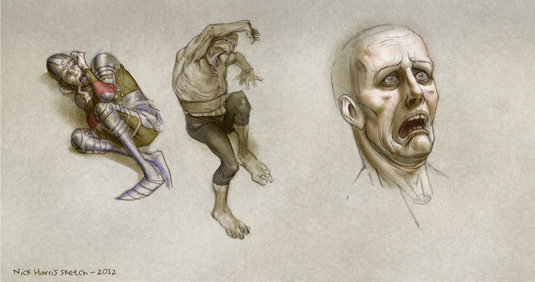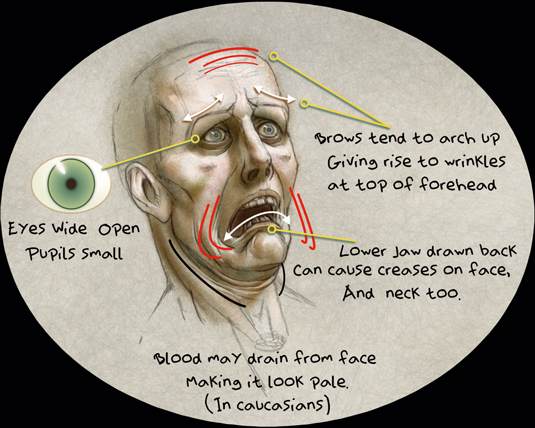How to draw a cowering figure
Top tips for creating a convincing character cowering with terror.

Although it's always best to tailor each figure specifically to its scene, there are a couple of basic staples that can get you started here. We're talking body language and facial expression, and if you can't see both then the other needs to get the message across.
The word cowering is normally associated with fear, either so debilitating that it denotes an acceptance of one's fate, or pleading to be spared whatever the particular terror is.
Body language
It's natural instinct in that position to arch away from the threat or curl up into a ball, rather like the foetal position, trying to make yourself as small as possible a target.
Despite different features, you should be able to use recognisable human body language to put across that same terror in humanoid creatures.
Expression

Either body-language stereotype should work if correctly placed with respect to the peril. Suitable facial expression should consolidate the message.
For some examples of interpretation of abject terror, you could do worse than seek out some of those classic horror B-movie posters with screaming girls in them. Eyes wide open, eyebrows angled up at the brow and mouth agape mid-scream.
This article originally appeared in ImagineFX magazine.
Like this? Read These!
- How to paint three different characters from one reference
- How to give your character an angelic backlight
- The ultimate guide to logo design

Thank you for reading 5 articles this month* Join now for unlimited access
Enjoy your first month for just £1 / $1 / €1
*Read 5 free articles per month without a subscription

Join now for unlimited access
Try first month for just £1 / $1 / €1
Get the Creative Bloq Newsletter
Daily design news, reviews, how-tos and more, as picked by the editors.

English artist Nick Harris switched to a digital canvas in 2000, after 18 years of using traditional media. Most of his work involves creating artwork for children’s books, though he has also dabbled in animation, including some background work on the hit 1988 film Who Framed Roger Rabbit?. He has supplied a wealth of advice and tutorial help for illustrators in ImagineFX magazine.
